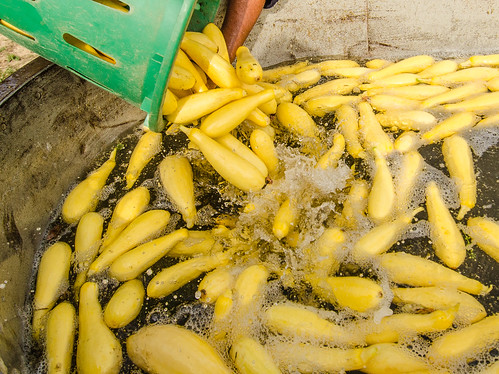
As the mom of a young boy, I am eager to learn more about the activities of growers and processors who supply my family and millions of others with our fruits and vegetables. In addition to being a mom, however, I am an agricultural statistician. Providing official statistics about agriculture gives me an opportunity to share knowledge about various aspects of the American food system, including food safety measures taken by fruit and vegetable operations across the United States.
To bring that crucial information into the spotlight, USDA’s Economic Research Service and the National Agricultural Statistics Service (NASS) joined efforts and created a series of surveys, which I have the honor of administrating. The surveys focus on food safety practices used in fruit and vegetable production and processing. The data obtained may inform our understanding of how the U.S. Food and Drug Administration’s Food Safety Modernization Act (FSMA) may impact operators.
The proposed 2015 Produce Post-Harvest Microbial Food Safety Practices, 2015 Fruit Chemical Use, and 2016 Vegetable Chemical Use surveys explore current activities of growers and processors and how those activities might relate to food safety. Not since 1998 has NASS surveyed operators about food safety practices and we need updated, accurate data.
We plan to begin collecting data for the Post-Harvest and Fruit Chemical Use surveys in September 2015. Operators, including growers, processors, packers, juicers, peelers, and others may receive the survey forms or be personally contacted by our interviewers. For those who receive the form, responding online is the most secure and cost-effective way to complete a survey.
I’ve observed that the vast majority of operators take steps to prevent contamination. Yet as reports show, microbial food-borne illness does happen. One of the crucial steps to prevention is having accurate data about existing practices to determine what other procedures could help producers better thwart contamination. Responses from survey participants will provide an accurate picture of what is happening now and may help shape new food safety outreach, guidelines and other technical assistance as FSMA is implemented. Responses may also identify areas in which growers and processors could benefit from research into additional prevention tools and resources. And so I hope we hear back from everyone who received a survey. Together we can contribute important knowledge in the interest of agriculture and public health.


